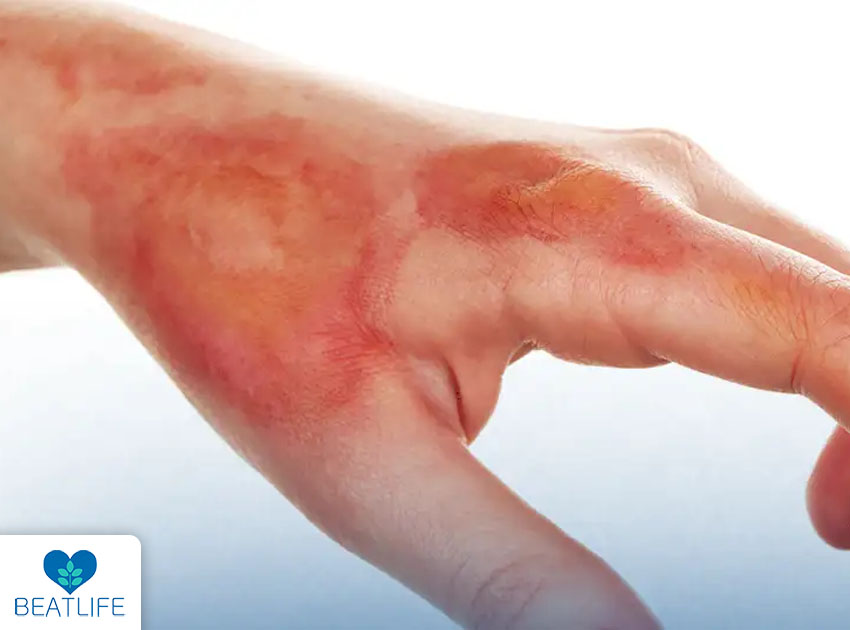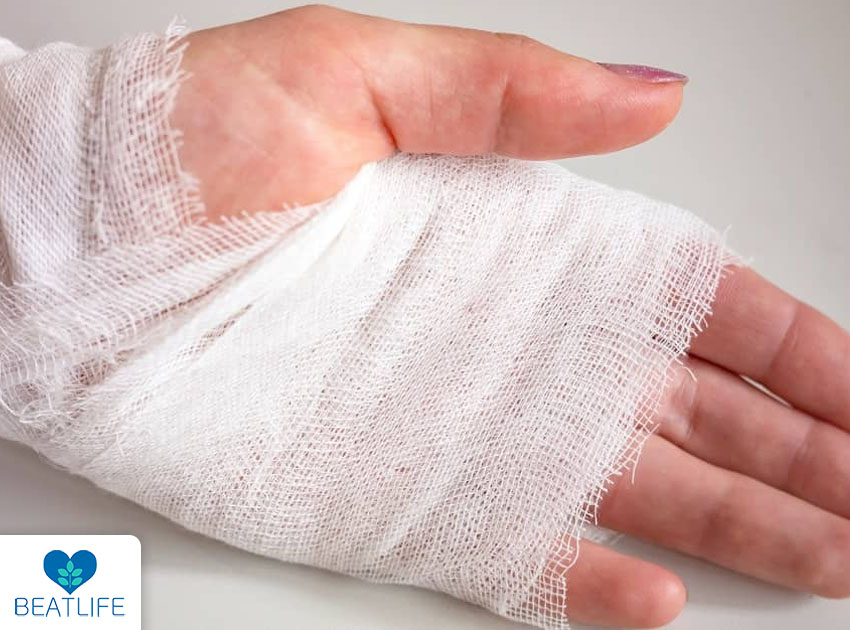Understanding the Difference Between 1st, 2nd & 3rd Degree Burns is crucial for effective care and recovery, with additional insights into the importance of CPR. In this detailed guide, we’ll explore the unique characteristics of each burn degree, providing insights into causes, symptoms, treatments, and emotional impacts. From prevention measures to real-life stories, this article offers a comprehensive understanding of burn injuries, specifically focusing on CPR.
Contents
- 1 Difference Between 1st 2nd & 3rd Degree Burns
- 2 Causes and Symptoms
- 3 Difference Between 1st 2nd & 3rd Degree Burns in treatment
- 4 CPR in Burn Situations
- 5 Complications and Risks
- 6 First-Degree Burn Complications:
- 7 Recovery and Aftercare
- 8 Understanding Difference Between 1st 2nd & 3rd Degree Burns in their Long-Term Effects
- 9 Prevention Measures
- 10 Understanding the Emotional Impact
- 11 Seeking Professional Help
- 12 Conclusion
- 13 FAQs
- 13.1 Can a first-degree burn turn into a more severe burn?
- 13.2 How long does it take for second-degree burns to heal?
- 13.3 Is scarring inevitable after a third-degree burn?
- 13.4 Are there any new treatments for severe burns on the horizon?
- 13.5 Can emotional support aid in burn recovery?
- 13.6 What are the key prevention measures for first-degree burns?
Difference Between 1st 2nd & 3rd Degree Burns
1. First-Degree Burns: Surface Sensations
First-degree burns affect the outer layer of the skin, resulting in redness and mild pain. Typically caused by sun exposure or brief contact with hot surfaces, these burns involve minimal damage. Understanding the symptoms and necessary treatments is crucial for effective care.
2. Second-Degree Burns: Delving Deeper
Second-degree burns present with blisters, intense pain, and swelling affect the outer and underlying layers. Caused by scalds, flames, or hot objects, they require careful attention and often medical intervention.
3. Third-Degree Burns: Penetrating Deep
Penetrating all layers of the skin, third-degree burns are severe and may reach underlying tissues. Caused by prolonged exposure to flames, chemicals, or extreme heat, these burns demand immediate medical assistance.

Causes and Symptoms
First-Degree Burn Symptoms:
First-degree burn symptoms include redness and mild pain, often accompanied by peeling during healing. While generally mild, understanding these symptoms is crucial for proper care.
Second-Degree Burn Symptoms:
Blisters, intense pain, and wet or shiny skin characterize second-degree burns. Early Recognition of these symptoms is essential for timely and effective treatment.
Third-Degree Burn Symptoms:
Charred skin, numbness, and the absence of pain due to nerve damage are indicative of third-degree burns. Immediate medical attention is necessary, emphasizing the importance of recognizing these symptoms.

Difference Between 1st 2nd & 3rd Degree Burns in treatment
First-Degree Burn Treatment:
Treating first-degree burns involves cool compresses and over-the-counter pain relievers. Sun avoidance during healing is essential for optimal recovery.
Second-Degree Burn Treatment:
Addressing second-degree burns includes cold compresses, antibiotic ointments, and proper bandaging. Severe cases may require medical attention to prevent complications.
Third-Degree Burn Treatment:
Emergency medical care, often involving surgery, is necessary for third-degree burns. Rehabilitation and long-term follow-up become integral components of the treatment plan.
CPR in Burn Situations
In situations involving severe burns, especially third-degree burns, immediate CPR can be a lifesaving intervention. CPR helps maintain blood circulation and oxygenation, which is vital for the well-being of the burn victim until professional medical help arrives. Due to the situation’s damage and severity, CPR feedback devices like BEATLIFE CPRmeter are suggested for accurate resuscitation.
Complications and Risks
First-Degree Burn Complications:
While complications are rare, infection is a possibility. Practicing proper hygiene and care significantly reduces the risk of complications.
Second-Degree Burn Complications:
Complications of second-degree burns may include infection, scarring, and changes in skin color. Close monitoring during the healing process is crucial.
Third-Degree Burn Complications:
Extensive scarring, loss of function, and potential disability are common complications of third-degree burns. Lifelong medical management may be necessary for optimal outcomes.
Recovery and Aftercare
First-Degree Burn Aftercare:
Moisturizing and sun avoidance are key components of first-degree burn aftercare. Healing typically occurs within a week with proper care.
Second-Degree Burn Aftercare:
Keeping the wound clean and avoiding picking at blisters are essential for second-degree burn aftercare. Healing may take several weeks, with potential scarring.
Third-Degree Burn Aftercare:
Extensive rehabilitation and ongoing medical care define the aftercare for third-degree burns. Long-term adjustments for a changed lifestyle are imperative.

Understanding Difference Between 1st 2nd & 3rd Degree Burns in their Long-Term Effects
First-Degree Burn Scarring:
Minimal scarring, if any, is associated with first-degree burns. Proper aftercare significantly reduces the risk of scarring.
Second-Degree Burn Scarring:
Scarring is common with second-degree burns, varying in severity. Scar management techniques may be recommended for optimal results.
Third-Degree Burn Scarring:
Extensive scarring and potential loss of function are common with third-degree burns. Surgical interventions may be considered to address scarring and restore function.
Prevention Measures
First-Degree Burn Prevention:
Preventing first-degree burns involves sunscreen application and awareness of hot surfaces. Prompt cooling of minor burns is crucial to prevent escalation.
Second-Degree Burn Prevention:
Caution around hot objects and fluids is key to preventing second-degree burns. The use of protective equipment, when necessary, adds an extra layer of prevention.
Third-Degree Burn Prevention:
Vigilance in avoiding prolonged exposure to extreme heat defines the prevention of third-degree burns. Strict adherence to safety guidelines, especially in workplaces, is imperative.
Understanding the Emotional Impact
Coping with First-Degree Burns:
Acknowledging pain and focusing on positive aspects are crucial for coping with first-degree burns. Supportive networks play a significant role in emotional well-being.
Managing Second-Degree Burn Emotional Impact:
Seeking professional help if necessary and developing emotional resilience are essential for managing the emotional impact of second-degree burns.
Dealing with Emotional Challenges of Third-Degree Burns:
Psychological support and counseling may be necessary to cope with the emotional challenges of third-degree burns. Acceptance of changed circumstances and finding new sources of joy contribute to overall well-being.
Seeking Professional Help
First-Degree Burn Consultation:
General practitioners and dermatologists guide first-degree burn consultations. Minimal medical intervention is usually required.
Second-Degree Burn Medical Advice:
Consultation with healthcare professionals is crucial for second-degree burns. Timely medical attention prevents complications and ensures optimal recovery.
Third-Degree Burn Emergency Response:
Immediate medical assistance is crucial for third-degree burns. Emergency services and burn specialists are pivotal in the initial response and ongoing care.
Conclusion
In conclusion, understanding Difference Between 1st 2nd & 3rd Degree Burns is crucial for effective prevention, prompt treatment, and emotional well-being. Each degree presents unique challenges, but with proper care and support, individuals can successfully navigate the recovery journey. The human spirit’s resilience and advancements in burn care continue to pave the way for brighter futures for burn survivors.
FAQs
Can a first-degree burn turn into a more severe burn?
First-degree burns typically do not progress to higher degrees if treated promptly and properly.
How long does it take for second-degree burns to heal?
Healing time varies but can take several weeks, depending on the burn’s severity.
Is scarring inevitable after a third-degree burn?
Yes, extensive scarring is common after a third-degree burn, often requiring surgical interventions.
Are there any new treatments for severe burns on the horizon?
Ongoing research in regenerative medicine shows promising potential for advanced burn care treatments.
Can emotional support aid in burn recovery?
Emotional support plays a crucial role in burn survivors’ overall well-being and recovery.
What are the key prevention measures for first-degree burns?
Sunscreen application and awareness of hot surfaces are key prevention measures for first-degree burns.
Reviewed by Dr Jamshidi Mohammad Reza

